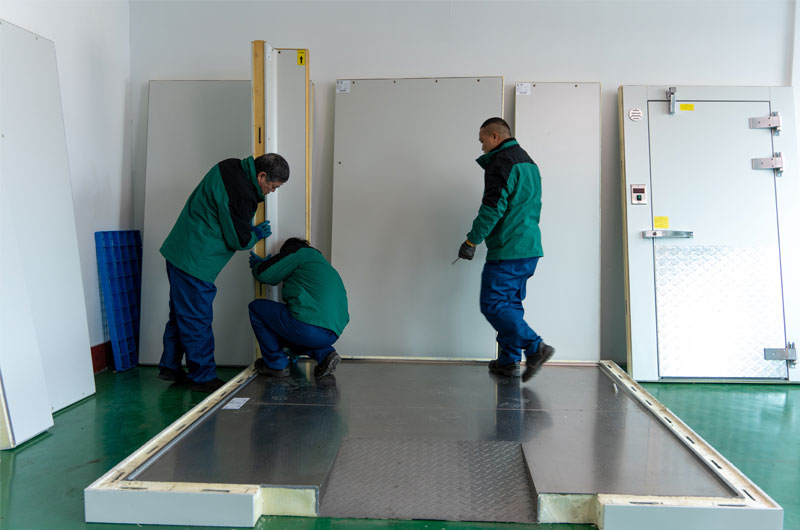Choosing the right cold room manufacturer is a critical decision for cold storage businesses. A cold room is not just a refrigerated box, it’s a complex system that demands precision engineering, quality materials, and professional service.
A poorly designed or low-quality cold room can lead to product spoilage, energy waste, frequent maintenance, or worse, complete system failure.
Here are 10 red flags to watch out for when selecting a cold room manufacturer:
1. Lack of Industry Certifications
A reputable cold room manufacturer should have industry-recognized certifications like ISO 9001, ISO 14001, CE, or HACCP compliance (for food storage). Missing certifications may suggest the manufacturer does not follow standardized quality control processes.
Red flag: They cannot produce verifiable certificates or hesitate to discuss regulatory compliance.
Why it matters: Certified manufacturers follow stringent quality control processes, ensuring the product meets safety and performance standards.
2. No Portfolio or Case Studies
Experienced manufacturers showcase previous work. Whether it’s photos, case studies, or client testimonials, a manufacturer should be proud to demonstrate past projects.
Red flag: The company fails to provide examples of previous cold room installations.
Why it matters: Without proof of experience, you’re taking a risk on unproven capabilities that may cost you later.
3. Poor Communication and Slow Responses
Timely communication is essential in every phase—from design consultation to after-sales support. Delays in response time or vague answers to technical questions can indicate unreliable service.
Red flag: They take too long to answer inquiries or avoid answering direct technical questions.
Why it matters: Cold room installation is time-sensitive. Ineffective communication frequently results in delays and execution mistakes.
4. No Customization Options
Every business has different requirements, be it for temperature range, size, racking systems, or door type. A one-size-fits-all solution is rarely effective.
Red flag: The manufacturer only offers fixed-size models and avoids customization.
Why it matters: A cold room that isn’t tailored to your needs can lead to inefficiencies in storage, energy use, and operations.
5. Unrealistically Low Prices
While cost efficiency is important, extremely low prices may signal inferior materials, poor insulation, or unreliable components like low-grade compressors and evaporators.
Red flag: The quote is significantly cheaper than others without explanation.
Why it matters: Cutting corners on equipment or installation can lead to higher long-term costs in energy bills, repairs, or total system replacement.
6. No Clear Warranty or After-Sales Support
Reputable manufacturers offer warranties and back their products with ongoing support for maintenance, repairs, and troubleshooting.
Red flag: No written warranty or vague terms like “limited coverage.”
Why it matters: If something goes wrong, you’ll want assurance that help is available without massive extra costs.
7. Outdated Technology
Cold storage technology is evolving rapidly. Efficient insulation panels, smart controllers, energy-saving compressors, and IoT integration are now common.
Red flag: The manufacturer uses outdated or obsolete technology in their systems.
Why it matters: Older technology tends to be less energy-efficient, more prone to failure, and harder to service.
8. Poor Online Reputation or Customer Reviews
In today’s digital world, customer feedback is more transparent than ever. Few reviews or repeated negative feedback online can be a significant red flag.
Red flag: Numerous complaints about product failure, missed deadlines, or poor service.
Why it matters: A manufacturer’s track record often reflects their future performance. A trail of unhappy customers is a major red flag.
9. Unclear Installation Timeline and Process
Installing a cold room requires coordination between design, delivery, and installation teams. A manufacturer that cannot offer a clear project timeline may be disorganized or understaffed.
Red flag: Vague answers like “it depends” or “we’ll figure it out as we go.”
Why it matters: Without a structured process and timeline, your business operations may be disrupted, leading to losses.
10. Limited Material and Component Transparency
Professional manufacturers clearly specify the type and grade of materials used, including insulation panels, refrigeration units, door hardware, and digital control systems.
Red flag: Refusal to provide technical specifications or brand names of components used.
Why it matters: Knowing the exact materials used allows you to evaluate durability, thermal performance, and energy efficiency.

